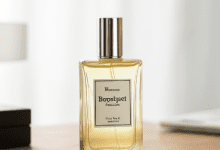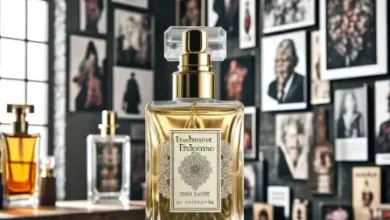The Invisible Hand of Scent: Decoding the $300 Billion Fragrance Economy
How Neuroscience, Cultural Shifts and Digital Innovation Are Reshaping Global Olfactory Markets

Abstract
The fragrance industry has evolved from a luxury niche into a 30.81 billion by 2030)
and China’s perfume sector exploding at 24.3% annual growth
, scent has become a strategic battlefield for conglomerates and startups alike. This article examines how neuroscience unlocks emotion-driven pricing power, why algorithmic perfumery disrupts traditional craftsmanship, and how Eastern aesthetics are rewriting global fragrance narratives.
1. Market Architecture: From Luxury to Lifespan Enhancement
The modern fragrance economy spans three interconnected layers: Functional Fragrances (e.g., Unilever’s neuro-perfumes boosting confidence via EEG-measured brain responses)
, Emotional Therapeutics (aromatherapy market hitting $10.4 billion by 2026)
, and Cultural Capital (niche perfumes as identity markers with 43% repurchase rates)
. Unlike traditional luxury goods, fragrance now penetrates daily rituals—home scents surged 37% during lockdowns as “scented sanctuaries” replaced experiential spending
.
Table: Global Fragrance Market Segmentation (2024-2030)
2. The Neuro-Economics of Scent: Where Science Meets Profit
Pioneering brands leverage olfactory neuroscience to monetize emotion:
- Subconscious Pricing Power: Unilever’s Lux沐浴露墨兰小香瓶 triggers “confidence enhancement” within 100 milliseconds of exposure—faster than conscious thought—allowing 30% price premiums
. EEG data proves scent bypasses rational cognition, making consumers vulnerable to emotion-based upselling.
- Algorithmic Perfumery: IBM x Symrise’s AI creates mood-optimized formulas using 1 trillion scent combinations
, while Givaudan’s MoodScentz maps odors to hormonal responses. These tools democratize bespoke perfumery—once exclusive to €5,000/kg master perfumers
.
- Addictive Formulations: Microencapsulation in Unilever’s Comfort香氛精华系列 extends longevity to 30 hours, exploiting the “Proust Effect” where scent-memory loops drive repurchases
.
3. Cultural Reconfiguration: Eastern Aesthetics Disrupt Western Hegemony
China’s fragrance market—projected to hit ¥51.5 billion ($7.1B) by 2029
—is rewriting global rules:
- Guochao Scent Revolution: Taobao sales of “Eastern notes” (tea, osmanthus, bamboo) rose 280% in 2024
. Brands like 观夏 and 闻献 repackage Chinese cultural symbols—e.g., “庐山云雾” (Lushan Mist) perfumes evoking ink-wash landscapes.
- Retail Disintermediation: Xiaohongshu (Little Red Book) drives 23% of discovery searches
, enabling direct-to-consumer models that bypass traditional luxury distributors. Livestreaming by influencers like Li Jiaqi converts niche scents to mass hits overnight
.
- Price Compression: Local brands dominate the ¥56 ($7.70) price tier—90% of China’s volume—forcing Western brands to develop “masstige” lines
.
Table: China vs. Global Fragrance Adoption
4. Sustainability Pressures: The Green Cost of Olfactory Pleasure
The industry faces ethical reckonings:
- Resource Colonialism: Sandalwood and oud production drives illegal logging in Indonesia and India. Synthetic alternatives like Firmenich’s Clearwood™ reduce ecological harm but face “naturalness premiums”
.
- Green Chemistry Race: DSM-Firmenich’s enzymatic synthesis cuts carbon emissions by 40% versus traditional extraction
. EU regulations now ban 86 allergens (e.g., lyral), pushing R&D toward biotech solutions.
- Circular Packaging: LOEWE’s ceramic refillable candles (priced 30% higher) exemplify zero-waste luxury—a segment growing at 12% CAGR
.
5. Future Frontiers: Digital Scentscapes and Metabolic Marketing
Emerging opportunities signal radical shifts:
- Virtual Olfaction: Digital scent NFTs (e.g., “MetaOud” by Bored Perfumer) tokenize rare formulas. Scent-enabled VR headsets prototype retail spaces where fragrance adjusts to user biometrics
.
- Health Integration: Clinical trials explore insulin-boosting bergamot scents for diabetics and melatonin-infused sleep mists—positioning fragrance as OTC therapeutics
.
- Synthetic Biology: Companies like Ginkgo Bioworks engineer yeast to produce extinct florals (e.g., Silphium, Julius Caesar’s lost aphrodisiac), creating “historical luxury” narratives
.
Conclusion: The Osmosis of Value
Fragrance economics now operates at the convergence of hard science and cultural anthropology. Winners will master three codes: neurological precision (scent as bio-software), cultural fluidity (from Kyphi rituals to AI-generated hanfu scents), and ethical transparency. As Unilever’s £80M R&D hub signals
, the future belongs to those treating scent not as artisanal craft, but as programmable sensory capital.









Fascinating read! Never realized how much neuroscience plays into fragrance pricing. The 100ms emotional trigger is wild!
As someone who collects niche perfumes, I’m concerned about AI replacing master perfumers. Algorithms can’t replicate human artistry imo
That China market growth is insane 😳 280% increase in Eastern notes sales is mind-blowing
The sustainability section was eye-opening. Had no idea sandalwood production was causing deforestation. Time to switch to synthetic options!
Anyone else notice how home fragrances became a lockdown essential? My diffuser was working overtime during quarantine lol